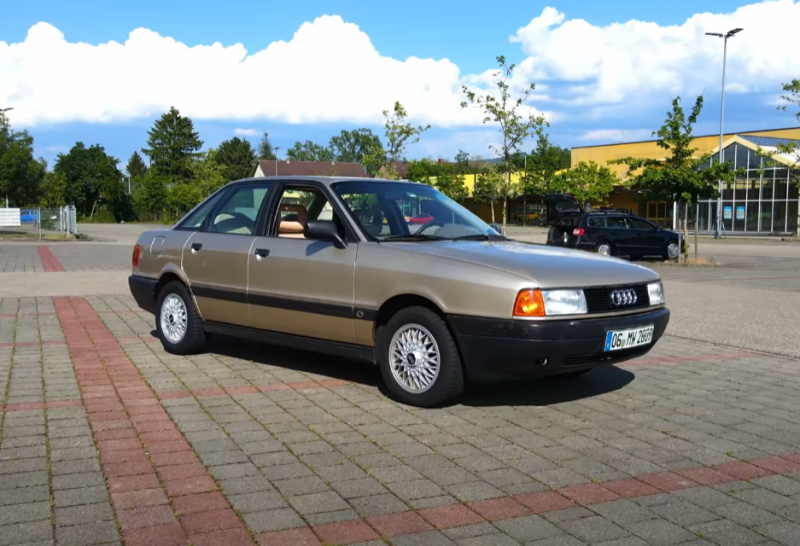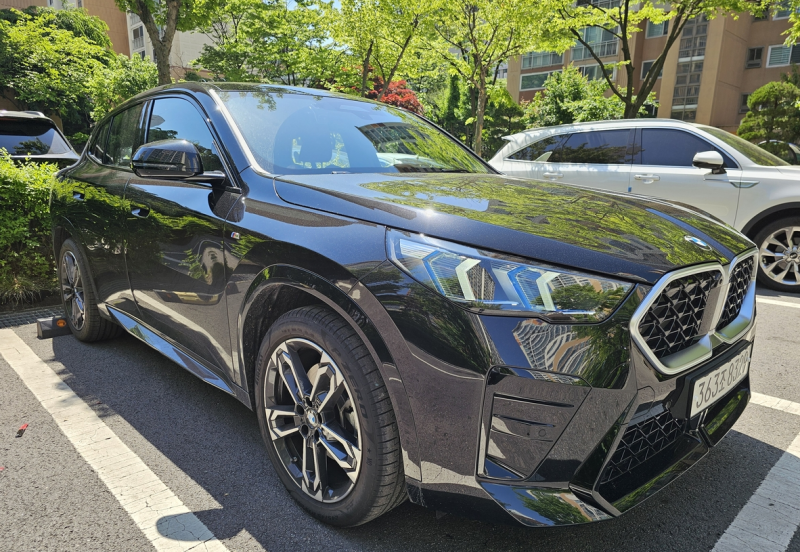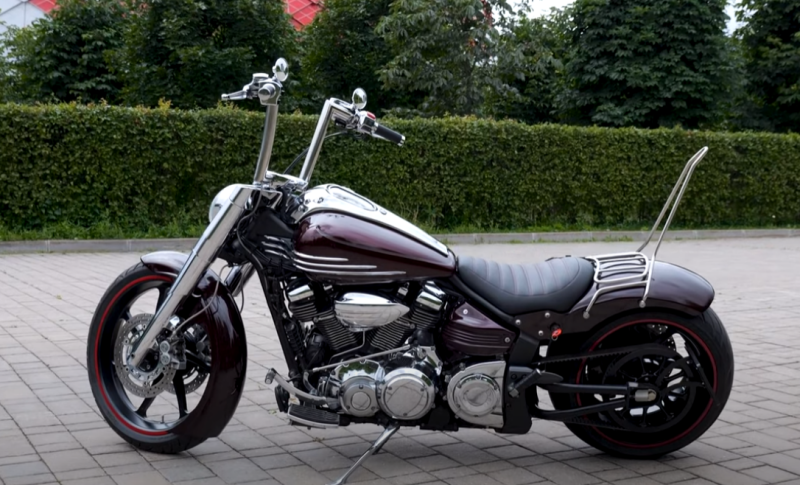Today we will talk about Viking ships - large boats with shields on the sides, heads of animals and dragons on the bow. It was they who carried their owners towards adventure. Not necessarily military - often commercial or diplomatic.
The meaning of the ships
The further north the Scandinavian tribes lived, the more difficult it was for them to survive. If it weren’t for ships, it’s generally difficult to get food on the same Faroe or Orkney Islands. Therefore, to have a watercraft was as prestigious as land.
 The Vikings did not have such huge ships. Photo: Youtube.com
The Vikings did not have such huge ships. Photo: Youtube.comA ship or large boat was suitable for:
✅ Fishing
✅ Hunting for seals and pilot whales
✅ Trade
✅ Rogue raids
In the Scandinavian countries, instead of barons and counts, there were kings, including maritime ones. The latter did not own land, but owned several ships, which attracted a squad. This forced the "powerful of this world" to reckon with them.
In the culture and life of the Scandinavian peoples, ships occupied an honorable place. Even the houses of the early Middle Ages are in the form of inverted "horses of the wave."
early boats
The inhabitants of the Baltic coast have always been famous as skilled seafarers. Even Tacitus, describing the Germanic and Baltic tribes, mentioned the strong fleet of the Svions. It was in 98 AD. Interestingly, this was written by a Roman citizen, and in his country the ships were considered among the best in the world.
 Now imagine what it is like in the open ocean on such a ship. Photo: Youtube.com
Now imagine what it is like in the open ocean on such a ship. Photo: Youtube.comSvionic ships are described as long boats with high prows on both sides. This feature makes it possible to quickly change directions - to move both forward and backward. There were no sails on the ships - they moved only at the expense of oars. The latter were not attached to the sides.
The written works of the Roman historian Tacitus are confirmed by rock paintings that have survived to this day. They show characteristic boats. Modern archaeologists claim that the drawings date back to the Bronze Age and are ritual. This already suggests that the ships, even at that time, had a sacred meaning for the Scandinavian tribes.
Of course, those boats were more like boats and were used for fishing and hunting. But obviously the Scandinavians of the Bronze Age also went on military and trading campaigns on them.
Design
Returning to the traditional Viking ships, their main feature should be noted. It was she who gave the opportunity to brave sailors to make not only sea, but also ocean trips.
 Seeing a striped sail, the inhabitants of the English villages tried to run away. Photo: Youtube.com
Seeing a striped sail, the inhabitants of the English villages tried to run away. Photo: Youtube.comThe hull of the ships was flexible. This was achieved by attaching the sheathing boards to the frames with "ropes" of wicker rods. On the waves, such a hull bent, but withstood the pressure. Mediterranean galleys, for example, during a storm could simply break on a wave.
The second key feature of the Viking ships is the one-piece keel from a single tree trunk. This gives an advantage in strength, but makes it difficult to increase the size of the vessel.
The hull of the Viking ships is quite light, the draft is low. This made it possible to explore new lands with minimal risk. Heavy ships could run aground or damage the bottom of the reefs. Viking ships often passed dangerous places without loss, although this is more the merit of the pilots.
Vessel types
The Vikings never divided their ships into military and commercial ones. Their fleet was more of a transport fleet, although ships were usually prepared for naval combat as well. Models for river and sea trips were different. The former accommodated more people, the latter were intended for long voyages.
 There were few people on long voyages on ships. Photo: Youtube.com
There were few people on long voyages on ships. Photo: Youtube.comAround the end of the XNUMXth century, ships began to be divided into three types:
✅ Knorrs
✅ Carvey
✅ Drakkars
The first were considered transport, trade and oceanic. The standard knorr had a crew of 6-8 plus a few warriors for protection. The main space was reserved for cargo. If a raid was supposed, then up to 30 Vikings could be accommodated on board.
Carvey is a versatile vessel. It was good for everything, but to a lesser extent than specific knorrs and drakkars. This feature has often been used to mislead. Say, a simple merchant ship, suddenly turning into a pirate. Up to 60 people could be accommodated on board, but usually there were two times less.
Drakkar is a fast narrow vessel. It got its name because of the head of the dragon, most often flaunted on the nose. The average capacity is about 70 people, of which at least 2/3 are rowers, they are also warriors. The most noble Vikings and skilled fighters did not sit on the oars - they needed to conserve their strength for the raid. Yes, and not by status ...
 Drakkar was the longest and narrowest ship. Photo: Youtube.com
Drakkar was the longest and narrowest ship. Photo: Youtube.comAsh and oak were used to build Viking ships. If these types of wood could not be obtained, they took pine. The sails were made of wool - as a rule, they were striped, but not always.
Modern replicas
In the Scandinavian countries, they honor their history, and the Vikings are considered national heroes there. Therefore, replicas of the ships of brave sailors are periodically built there. As a rule, they are used for pleasure walks - they ride tourists.
 Modern explorers have sailed several times to America on these ships. Photo: Youtube.com
Modern explorers have sailed several times to America on these ships. Photo: Youtube.comThe most famous ship of our time is Harald the Fair-Haired. This is a cross between a knorr and a drakkar - like a carvy, but increased in size. It was built in the image and likeness of the Gokstad ship.
In 2014, the ship sailed safely to England and returned. A couple of years later, it made a legendary flight in the footsteps of the discoverers of America - Eric the Red and Leif Erickson.
Viking seafaring skills
It is generally accepted that the Scandinavians swam almost at random, at some specific points. All their travels are almost luck. In fact, the Vikings were well versed in the open sea and ocean.
 The courage of sailors can only be envied. Photo: Youtube.com
The courage of sailors can only be envied. Photo: Youtube.comJudging by the sagas, the Scandinavians determined the direction and location of their ships by the sun and the North Star. A certain magic stone is also mentioned, which allows you to navigate in any weather. It is believed that this is a kind of compass, but where it came from the Vikings - there is no information.
In the sagas, the device is described as a "sun stone" that sank into the water and floated there, indicating the direction. Perhaps it was a board with a magnet on it. Most likely, in their travels, usually trading, the Scandinavians sailed to China, and there primitive analogues of the compass definitely existed already in 250.
The Vikings were able to determine the geographical latitude. We know this from the sagas. A device called a "solar board" was used. He has not been found to this day.
 A small knorr tried to get hold of every noble Scandinavian. Photo: Youtube.com
A small knorr tried to get hold of every noble Scandinavian. Photo: Youtube.comAncient sailors determined longitude by the distance traveled. Accordingly, in new campaigns they had to navigate only in latitude, relying on their experience and ships. Fogs and clouds often confused all plans - so the Vikings tried to sail in the summer when the weather was clear.
Despite their unique seaworthiness, Scandinavian ships were open. Therefore, traveling on them across the ocean is another pleasure. At best, a tent was set up in the middle, but only on large ships.
Despite this, the Vikings went on the longest flights without fear and doubt. In them they gained seafaring experience, gained wealth and fame. It was the unique ships that glorified the Vikings, making them the greatest navigators of their time.










